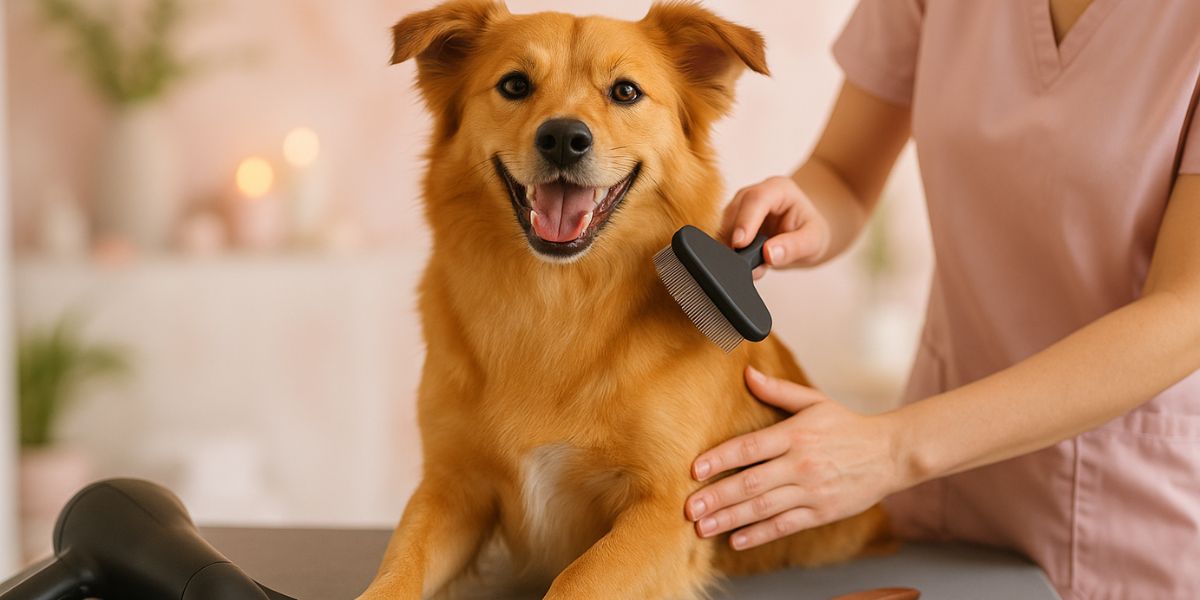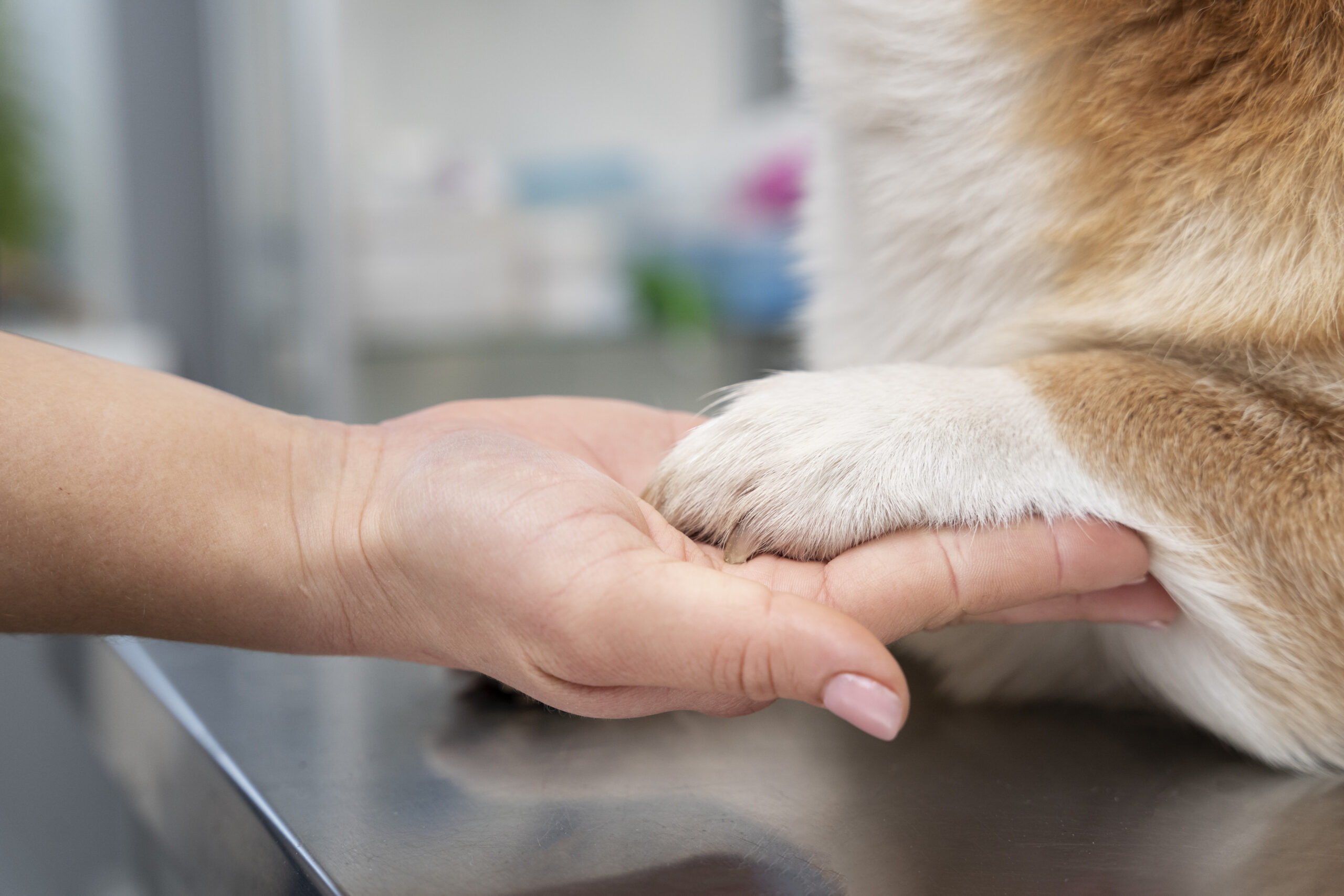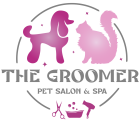
Let’s be honest: when was the last time you thought of grooming as something more than just making your dog smell nice? Probably when your pup rolled in something questionable, right?
But here’s the thing — grooming isn’t just about looking good or feeling fresh. It actually plays a surprisingly big role in your dog’s mood and behavior. Yes, that cute post-grooming zoomie might be telling you more than just “I feel fabulous!” It could be your dog’s way of saying, “Ah, I feel better.”
So, let’s dig into how grooming might be impacting your dog emotionally — even if they act like getting brushed is a betrayal of trust.
Grooming = Comfort, and Comfort Shapes Mood
When your dog’s fur gets matted, skin gets itchy, or nails get too long, it causes physical discomfort — sometimes even pain. That discomfort, as you’ve probably experienced with your own body (tight shoes, anyone?), leads to irritability.
So if your usually chill pup starts acting distant or even cranky, don’t jump to behavioral training right away. It might just be time for a trim, a brush, or a pawdicure.
Quick Fact: According to the American Kennel Club (AKC), long nails can change a dog’s posture and put painful pressure on joints, which in turn affects their willingness to walk, play, or interact normally.
The Power of Touch: Emotional Bonding During Grooming
When you take the time to brush or bathe your dog, you’re not just giving them a glow-up. You’re providing physical contact that builds trust.
Think of it like this: grooming is the dog equivalent of a relaxing massage. If you do it regularly and gently, it becomes a source of emotional security — a predictable routine where they feel safe and cared for.
This trust can overflow into other areas too. Dogs who are regularly groomed often become more tolerant of handling by vets, strangers, and even rowdy children.
Real Example: One pet parent on a Dubai expat forum shared how their anxious rescue dog began relaxing more in public settings after several calm mobile grooming sessions. The dog had associated touch with stress — but grooming, done right, helped reverse that.
Behavioral Shifts: The Good, the Bad, and the Zoomies
You’ve probably noticed your dog going from anxious and withdrawn to downright joyful after a good grooming. That’s no coincidence.
Clean fur helps regulate temperature better. Tidy ears mean fewer infections. Brushed coats remove allergens and dead skin. All these things play into your dog’s overall well-being, which reflects in how they act.
But — and here’s where things get tricky — if grooming is rushed, painful, or inconsistent, it can increase fear-based behaviors. You might see hiding, snapping, or resistance when they see a brush or hear the word “bath.”
That’s not a sign of a naughty dog — it’s a sign of a stressed one.
Tip from Pros: Grooming expert Verity Hardcastle (from Pooch Perfect UK) advises creating positive associations: start young, use rewards, and keep early sessions short and sweet.
Not All Dogs React the Same (And That’s Okay)
Here’s where I’ll admit my limitations: not every dog responds to grooming the same way, and there’s no one-size-fits-all model. Some dogs love a full spa day with bubbles and bows. Others would rather take their chances in the wild than face the sound of a blow dryer.
Breed, age, past trauma, and even grooming frequency all influence how your dog reacts. What works for your neighbor’s Goldendoodle might not work for your grumpy little terrier.
Still, one thing seems consistent: gentle, patient, regular grooming reduces stress over time. Even dogs who initially resist can come around with the right approach and positive reinforcement.
Mobile Grooming: A Rising Trend That Makes a Difference
Especially in places like the UAE, mobile grooming is changing the game. Your dog stays in a familiar environment, doesn’t face stressful car rides, and gets undivided attention from a trained groomer.
And you? You get a clean dog without fur all over your car’s backseat. Win-win.
The mobile setup also means less sensory overload for anxious dogs — no barking from other pets, no strange smells, and no long waiting times.
Trending: The rise of mobile grooming services in Dubai and Abu Dhabi has coincided with more owners reporting improved behavior in previously anxious or reactive pets. Coincidence? Unlikely.
What’s Still Unclear? Plenty.
Here’s where science is still catching up. While anecdotal evidence and expert opinions suggest grooming impacts behavior, peer-reviewed studies on the emotional effects of grooming are limited.
We still don’t fully understand:
- Which types of grooming trigger the most stress relief?
- How long the mood boost lasts after grooming?
- Whether certain breeds are more emotionally affected than others?
What we do know is this: clean, comfortable dogs behave better. The correlation may not be 100% proven causation yet, but the pattern is hard to ignore.
Final Thoughts: Grooming as Emotional Care
You used to think grooming was just a hygiene thing. Now? Hopefully you see it as emotional care too.
Your dog doesn’t just walk out of a grooming session looking Instagram-ready — they feel lighter, more relaxed, and more in tune with you. Over time, that contributes to better behavior, reduced stress, and a stronger human-canine bond.
And if your dog throws in a post-bath zoomie? Just know that’s their way of saying “Thanks. I feel good now.”
Recent Post

Top Benefits of Choosing Professional Mobile Pet Grooming in Dubai and the UAE

5 Grooming Habits That Help Reduce Shedding at Home

Desert Paw Care – Protecting Your Pet’s Feet & Pads in the UAE Heat


